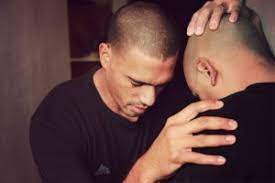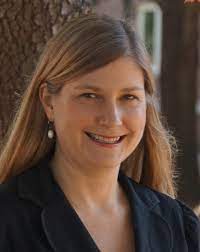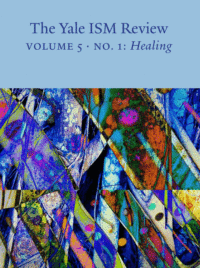Rebecca F. Spurrier
Whenever I teach a course on Christian worship, my students and I spend time together talking about healing prayers and liturgies. I prioritize these discussions both because liturgy can help to heal the painful webs of violence in which we find ourselves and because it is imperative that worship leaders reflect on the potential violence of ritual practices of healing. My hope is that future pastors and other leaders will imagine healing in ways that do not objectify particular kinds of body-minds and will foster liturgical practices that awaken our desires for the depth and breadth of what it means to be embodied together in relationship with God and others. Thus, I hope to identify some of the symptoms of ableism that shape many Christian imaginaries in order to liberate liturgical impulses as my students respond to harm and loss among the people with whom they worship. Such work requires making connections between the bodies of the people who gather for healing and the kinds of spaces that promote or prohibit nonviolent practices of healing.
My own liturgical imagination regarding ableism and healing was transformed by a community with whom I prayed regularly for many years, first as an intern and later as an ethnographic researcher.[1] Sacred Family,[2] as I shall call them, was an unusual congregation where people with and without mental illness and other disabilities, many of whom came to the church from group homes and experienced poverty. They assembled throughout the week for Holy Eucharist, Morning and Noonday Prayer, as well as other special services. In addition to worship services, congregants gathered twice a week for day programs and meals, which included art programs, gardening, Bingo, singing, and yoga, among other activities.
During my time with this congregation I participated in a liturgical practice that was new to me. Every other Wednesday, during a service of healing, after scriptures were read and prayers spoken, many congregants eagerly went forward to offer their individual concerns and to allow another to pray for healing. One by one a deacon, priest, or lay leader would lay hands on each one prompted by a request from the person standing before them.

Informed by such powerful warnings regarding the violence of healing practices, I initially hesitated to participate in prayers with the potential to reinforce patterns of stigma regarding body-minds that do not confirm to social expectations. Only when a disabled Sacred Family congregant urged me to go forward for healing, assuring me that I could pray for whatever I wanted to pray for, did I choose to join the lines of people waiting to be prayed for at the front of the sanctuary. The eagerness of those around me to participate in healing prayer as well as their ways of reflecting on their own participation nuanced my understandings of the complicated relationships between desires for healing and the divides of ableism that shape many Christian communities.
Sacred Family congregants named for me a wide range of situations and relationships that healing prayers might address. Kayla explained to me that when she prayed for healing she asked for marriage for herself and for others as she anticipated the healing qualities of everyday companionship, play, and obligation that surpassed conventional bonds of friendship. Rose described healing as something that happened not only through prayers for healing but because of the kinds of help that people at the church received through food, clothes, and other forms of assistance. Miriam discussed the care and respect she received from people who helped her to choose life rather than death. Wallace prayed for healing for his friends and family.
The eagerness of those around me to participate in healing prayer as well as their ways of reflecting on their own participation nuanced my understandings of the complicated relationships between desires for healing and the divides of ableism that shape many Christian communities.
Ginny, a lay person who frequently offered prayers of healing for others, spoke of her work not as support for the eradication of congregants’ disabilities but as the intention to bring a complicated set of desires regarding health and well-being to God and to invite God to work with those desires in a way that only God could do. In her mind, healing prayers at Sacred Family did not seek to remove disability but played a role in the acceptance that congregants claimed for themselves and for others. She imagined healing prayers creating a safe space for desires that neither the petitioner nor the one who prays for healing fully understand. Those who came forward for healing prayers sought access to the wisdom and affirmation of God through practices of trust and through the help of another’s breath and touch.
While no single definition or experience of healing emerged among congregants at Sacred Family, those who participated in healing prayers resisted ways of speaking about their desires for their lives or the lives of others with the pity, condescension, or hopes for able-bodiedness that typify many worshipping communities. In my observation, non-violent practices of healing at Sacred Family assumed that those who gathered for prayer identified themselves and others through a wide range of names and relationships. Those who prayed for one another were not praying for “the poor,” “the disabled,” or “the mentally ill” but for those with whom they prayed together each week. Through growing in knowledge and love for each other in different ways across the span of a week, congregants with and without disabilities claimed the worth and beauty of their own lives together. rather than perceiving some people’s lives as problems to be solved or saved by others.
Sacred Family’s liturgy thus raised a broader set of questions for me about the communal conditions that foster ecclesial practices of consensual rather than coercive healing.[7] What kinds of healing practices might shape desires for the transformation of one’s body-mind in ways that were not constrained and defined by dreams for normality or ablebodiedness? In what ways do communities refuse to use some kinds of bodies to imagine the healing of others? From my vantage point at Sacred Family, weekly practices for consensual healing prayers were made possible because of other forms of solidarity that happened across the week as those who gathered transformed their attitudes regarding mental illness and neurodiversity. For these Wednesday prayer services were only one small movement in a life together that extended across the week and month. Such rhythms included Sunday Eucharist, Wednesday services, morning and noonday prayers as well as day programs, and many, many meals together. Without congregants singing, praying, sitting, eating, painting, playing, doing yoga, laughing, and arguing together across a week-long liturgy, the healing rites might not have emerged from daily artistries of social interaction and from relationships of trust and mutuality. In this sense, consensual healing necessitated proactive attention to the wounds of ableism; such “creative attention”[8] involved the intentional creation of spaces where congregants could bring both their dreams and their experiences of loss and pain without fear that another would turn them into an object of pity or charity, or as some congregants put it, that someone would “treat them like a child” or “throw their lives away.” Such practices helped to liberate the hopes and dreams that those who gathered had for themselves and one another.
Without congregants singing, praying, sitting, eating, painting, playing, doing yoga, laughing, and arguing together across a week-long liturgy, the healing rites might not have emerged from daily artistries of social interaction and from relationships of trust and mutuality.
At the same time, status and power dynamics in the community continuously challenged desires for relationships that fostered consensual healing. As one congregant, Aisha, explained to me, while she had experienced powerful transformation in herself and others through her interactions with others Sacred Family, she was also frustrated with constraints on the relationships she was able to have, particularly with those who came to work at the church for a season and then left. When I asked her what made it difficult to be a community here, she talked about building trust:
I don’t like how you may build a real friendship, but there are statuses, and when the person has a certain status, you can probably keep up with them, but it’s not the same as a true friendship where you could go and have dinner or lunch or hang out. It’s not that type of friendship. It’s more like I care about you, but we’re a different status, so that hurts.
She expressed hope that in time she might share more permanent bonds with people of a different social status outside of ecclesial space and time. I observed the tensions in her experiences of herself within this community, a community that is a church, and yet where some congregants still experience themselves at times as “clients” rather than as persons who are desirable to, and on equal standing with, others. Aisha acknowledged that the boundaries of church space serve as the boundaries of some “friendships”: “I feel like the people I come to see, as long as I come here I get to see them, but if I don’t come here, I don’t get to see them.” While she wanted to identify her relationships with other Christians as experiences of blessing and mutuality, she was also frustrated by the implicit rules that govern relationships in times and spaces outside church gatherings, when some congregants returned to places where others would never live or socialize.
In speaking with Aisha and others, I noted that the consensual practices that seek to heal ableism within the boundaries of the church are often threatened or undermined by clear divides that occur outside the spaces and times of the church. Relationships formed within the congregation did not significantly transform other patterns for living and healing together outside the church. Thus while Sacred Family offered vital spaces for transforming practices of ableism both within and outside of its formal liturgies, it also illumined the persistent violence of a city in which some congregants lives are worth more than others and where social statuses and material resources continue to divide those who gather for prayer. To establish the conditions for consensual healing within congregational time and space also meant the more difficult work of interrogating and transforming coercive practices of ableism into which congregants are sent. [ix] Sacred Family fostered dreams for the healing of relationships between people with and without disabilities, yet it also anticipated a different kind of ecclesial work that is necessary to create the conditions for the consensual healing of all who gather for prayer.
 Dr. Rebecca F. Spurrier is Associate Dean for Worship Life and Assistant Professor of Worship at Columbia Theological Seminary. She is interested in a theology and practice of public worship that reflects the beauty and tension human difference brings to Christian liturgy. Engaging ethnographic theology, disability studies, and liturgical aesthetics, her research explores the hope of human interdependence and the importance of liturgical access for religious practice and Christian community. She is the author of The Disabled Church: Human Difference and the Art of Communal Worship.
Dr. Rebecca F. Spurrier is Associate Dean for Worship Life and Assistant Professor of Worship at Columbia Theological Seminary. She is interested in a theology and practice of public worship that reflects the beauty and tension human difference brings to Christian liturgy. Engaging ethnographic theology, disability studies, and liturgical aesthetics, her research explores the hope of human interdependence and the importance of liturgical access for religious practice and Christian community. She is the author of The Disabled Church: Human Difference and the Art of Communal Worship.
[1] For a more detailed account of this research, see Rebecca F. Spurrier, The Disabled Church: Human Difference and the Art of Communal Worship (New York: Fordham University Press, 2019).
[2] The name of the church and all names of persons have been changed to protect confidentiality.
[3] Nancy L. Eiesland, The Disabled God: Toward a Liberatory Theology of Disability (Nashville: Abingdon Press, 1994), 70–75.
[4] David Mitchell and Sharon Snyder, “‘Jesus Thrown Everything Off Balance’: Disability and Redemption in Biblical Literature,” in This Abled Body: Rethinking Disabilities in Biblical Studies, ed. Hector Avalos, Sarah J. Melcher, and Jeremy Schipper (Atlanta: Society of Biblical Literature, 2007), 178–79.
[5] Sharon V. Betcher, Spirit and the Politics of Disablement (Minneapolis: Fortress Press, 2007), 70.
[6] Betcher, 71.
[7] I borrow the phrase “consensual healing” from Claire Cunningham. See Claire Cunningham, “Consensual Healing,” Guide Gods Digital Collection (audio), August 22, 2019, https://www.clairecunningham.co.uk/guide-gods-digital-collection/consensual-healing/.
[8] I draw on the concept of “creative attention” in Simone Weil’s writings. See Simone Weil, Waiting for God (New York: Harper Perennial Modern Classics, 2009), 87, 91–92.
[9] See also Julia Watts Belser, “Violence, Disability, and the Politics of Healing: The Inaugural Nancy Eiesland Endowment Lecture,” Journal of Disability & Religion, 19, no. 3 (2015): 177–97.
—
This material is licensed under an Attribution-NonCommercial 4.0 International License.
Recommended Citation: Spurrier, Rebecca F. (2019): “For What and for Whom Do You Pray? Coercion, Consent, and the Healing of Ableism” The Yale ISM Review: Vol. 5: No. 1, Article 11. Available at https://ismreview.yale.edu
